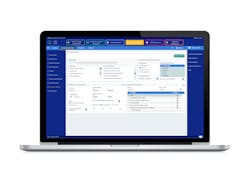Get Your Technology RFP in Order
"Do you have any good samples of revenue software RFPs that you could send me?”
Over the many years of working as a partner in the aviation software space, this is one of the most common requests that come from clients or prospects. If I were to get at the heart of what they’re asking, I’d put it this way: ‘In your experience, what are the best practices for procuring revenue software that would benefit my airport, protect my job and make me look smart?’
While each airport has its secret sauce and unique attributes, there are some common threads of success that weave their way through many well-written RFPs, especially when it comes to non-aeronautical revenue projects. Caveat emptor: I come at the task from a real estate perspective, having spent over 15 years as a commercial broker, property manager, software vendor, only to find that while helpful, a real estate perspective is not always the best approach. Base rent bumps and escalations are not the same as rates and charges. A deeper understanding of the unique ways in which airports lease and manage non-aeronautical revenue spaces, significantly helps to inform the conversation toward best practices.
So without further delay, a series of best practices observations I’ve witnessed in the wild:
Educational crash course
While the revenue collection methods at airports is slow to shift, things change quickly and often dramatically in the aviation software space. Reach out to those partners who you’d expect to want to respond to your upcoming RFP and ask for a demonstration of their product, either online or in person. Put a 1-1.5 hour collar around it and make sure they understand that it’s less about the partner’s company (minimizing the PowerPoint) and primarily about educating the evaluation team. If a partner shows a really nifty feature that resonates with the audience, you might want to consider adding it to the RFP requirements. However, on the opposite end of the spectrum, be careful about including every possible whim in the requirements section. Be clear on your core scope and the things you must have in a final solution, then let the presenting vendors show you their secret sauce and why they’re the best thing since sliced bread.
Relationships still matter
You’re still asking a group of people (revenue software providers) to respond to the needs of another group of people (your airport staff). Just because you’re in the middle of piecing together an RFP for revenue management, doesn’t obviate the utility to engaging people you know and trust in the industry.
Budget, be free!
People are often hesitant to give internal budget numbers even though there’s a high probability that it’s already been published the previous year in the public domain. It generally won’t affect the respondents’ costing structure, but will help weed out those partners who are either too expensive or under-powered to support the solution long-term. We’re still competing against each other on the balance between features and price, often called value.
Including a budget estimate in the RFP or in the Q&A will also contribute to relaying the degree of sincerity in securing the best solution. What do I mean? If you are asking for every possible bell and whistle in the requirements section but the budget is $10.50, it would highlight a disconnect between need and ability to acquire. However, if the requirements section is reasonable and matches the budget, it will send a clear signal that your airport is serious about acquiring a long-term solution in partnership with the winning vendor. Additionally, it will encourage respondents to more thoroughly think through their response in a meaningful way, and not just turning in a boiler-plate response.
High risk areas.
Ask for potential high-risk areas and don’t be afraid of the responses. Give partners a safe place to land by explicitly carving this section out of the evaluation criteria. As an example, a recent RFQ for an Identity Management solution included the following language, “The Executive Summary should also include a list of high risk areas which were identified during the RFQ process that are reasons for concern. CONTRACTOR will not be evaluated on this paragraph and cannot lose evaluation points for listing areas of concern. These concerns will be addressed with the successful CONTRACTOR(s) during negotiations.”
When phrased in this manner, the airport has sent the strong signal that A) they may not have all the answers or thought through all the potential pitfall and are counting on us to thoughtfully think through the process from beginning to end, and B) our response, or lack thereof, will not play in to our scoring to our benefit or detriment. It surfaces thoughtful ideas all of which could be discussed with the winning vendor.
All income is not created equal
I still remember one of my past bosses reminding me, “Not all revenue is good revenue. There is such a thing as bad revenue.” For airport-specific needs, look for airport-specific solutions, wherever possible. The industry has matured to the point where there’s a very high probability that there’s an airport-centric solution to your problems, instead of a more generic functional software solution. A glaring exception to this notion is when it comes to an ERP or General Ledger system. Since debits and credits and associated transactional systems and ledgers are treated pretty similarly across industries, a generic system such as SAP, Oracle, PeopleSoft and MS Dynamics are common ERP solutions utilized at airports across the US. This is an even more pertinent experience when the airport is owned by a municipality such as a city or county where the ERP has to cut across all divisions. However, when it comes to an airport leasing and revenue system, an aviation-specific solution should be the goal.
As an example, when you interview a non-aeronautical revenue software provider, you want them to understand things like how airline rates and charges affect your revenue stream and how shared utility expenses are treated inside a terminal (as compared to commercial common area maintenance charges). The software needs to think like an airport and to have been programmed through the eyes of experienced airport people. It’s not too much to ask or expect.
Dear John Debrief
When you pick a winner, you also pick some losers. I know you don’t think of them that way, but believe me that they do. Dale Earnhardt’s quote comes to mind: “Second place is first loser”. We’ve put a lot of time and effort into responding to your RFP, so are understandably disappointed when not selected.
However, you have a very important role to play in this final stage of the process (at least for the losing vendors): Facilitating a loss debrief meeting for those vendors brave and sincere enough to reach out to you to request one. Whether a winner or not, there’s always something to learn after each response or presentation. Was our response legible and make sense or was it too long-in-the-tooth and difficult to get through? Where did we rate highly and where did we fall short? How would you suggest our next response and presentation be changed to better reflect our capabilities? Were we just too expensive?
A sincere respondent should ask those kinds of questions and your assistance to help them understand their strengths and weaknesses goes a long way toward applying salve to the wound generated from the loss. Additionally, encourage them to apply for a copy of the other respondent’s RFP responses through your public procurement channels (such as Freedom of Information Act (FOIA) requests).
In my opinion the singular most over used line in the aviation space is, “When you’ve seen one airport, you’ve seen one airport”. While your airport does indeed have uniquenesses that will drive unique solutions, we’ve investigate some common elements in writing, receiving, evaluating and selecting the best revenue software vendor for your airport. There are others, but these are the biggies.
We’re human too and have many of the same core needs as your staff. Paying attention to the human elements throughout this process will go a long way toward not only selecting the best solution for your airport, but to establishing enduring relationships with the vendor community. See you on the road.

